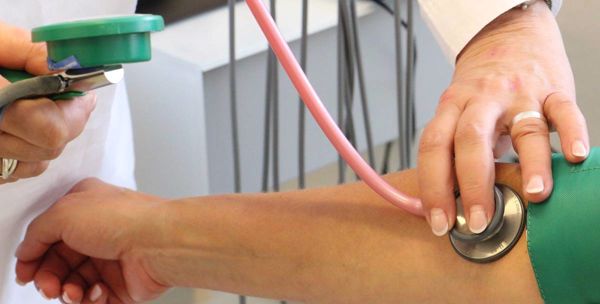Pre-eclampsia is a condition that affects some pregnant women, usually during the second half of pregnancy (from around 20 weeks) or soon after their baby is delivered.
Symptoms of Pre-eclampsia
Early signs of pre-eclampsia include having high blood pressure (hypertension) and protein in your urine (proteinuria).
It's unlikely that you'll notice these signs, but they should be picked up during your routine antenatal appointments.
In some cases, further symptoms can develop, including:
- Swelling of the feet, ankles, face and hands caused by fluid retention (oedema)
- Severe headache
- Vision problems
- Pain just below the ribs
Although many cases are mild, the condition can lead to serious complications for both mother and baby if it's not monitored and treated. The earlier pre-eclampsia is diagnosed and monitored, the better the outlook for mother and baby.
Who's Affected?
Mild pre-eclampsia affects up to 6% of pregnancies, and severe cases develop in about 1 to 2% of pregnancies.
There are a number of things that can increase your chances of developing pre-eclampsia, such as:
- Having diabetes, high blood pressure or kidney disease before starting pregnancy
- Having another condition, such as lupus or antiphospholipid syndrome
- Having developed the condition during a previous pregnancy
Other things that can slightly increase your chances of developing pre-eclampsia include:
- Having a family history of the condition
- Being over 40 years old
- It having been at least 10 years since your last pregnancy
- Expecting multiple babies (twins or triplets)
- Having a body mass index (BMI) of 35 or over
If you have 2 or more of these together, your chances are higher.
If you're thought to be at a high risk of developing pre-eclampsia, you may be advised to take a daily dose of low-dose aspirin from the 12th week of pregnancy until your baby is delivered.
What Causes Pre-eclampsia?
Although the exact cause of pre-eclampsia is not known, it's thought to occur when there's a problem with the placenta, the organ that links the baby's blood supply to the mother's.
Treating pre-eclampsia
If you're diagnosed with pre-eclampsia, you should be referred for an assessment by a specialist, usually in hospital. While in hospital, you'll be monitored closely to determine how severe the condition is and whether a hospital stay is needed.
The only way to cure pre-eclampsia is to deliver the baby, so you'll usually be monitored regularly until it's possible for your baby to be delivered. This will normally be at around 37 to 38 weeks of pregnancy, but it may be earlier in more severe cases.
At this point, labour may be started artificially (induced) or you may have a caesarean section. Medication may be recommended to lower your blood pressure while you wait for your baby to be delivered.
Complications
Although most cases of pre-eclampsia cause no problems and improve soon after the baby is delivered, there's a risk of serious complications that can affect both the mother and her baby.
There's a risk that the mother will develop fits called "eclampsia". These fits can be life-threatening for the mother and baby, but they're rare.
If you notice any symptoms of pre-eclampsia, seek medical advice immediately by calling your midwife, GP surgery or NHS 111.






